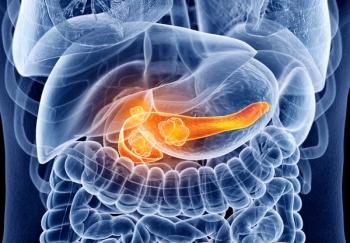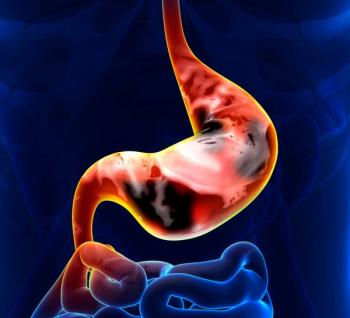
- ONCOLOGY Vol 12 No 10
- Volume 12
- Issue 10
Irinotecan May Extend Survival in People With Metastatic Colorectal Cancer
Data presented at the American Society of Clinical Oncology meeting by Professor Eric Van Cutsem, MD, PhD, University Hospital Gasthuisberg, Leuven, Belgium, demonstrate, for the first time, that people with metastatic colorectal cancer who
Data presented at the American Society of Clinical Oncology meeting by Professor Eric Van Cutsem, MD, PhD, University Hospital Gasthuisberg, Leuven, Belgium, demonstrate, for the first time, that people with metastatic colorectal cancer who receive irinotecan hydrochloride (CPT-11 [Camptosar]) as second-line therapy have better survival than those treated with high-dose fluorouracil (5-FU).
"These findings are significant because for the first time the value of chemotherapy as a second-line treatment for metastatic colorectal cancer patients has been demonstrated," said Dr. Van Cutsem. The study shows that irinotecan may be a better therapeutic option than best infusional 5-FU for patients who are able to receive second-line chemotherapy, and establishes a new reference treatment.
The study is the first randomized, phase III study conducted in metastatic colorectal cancer comparing irinotecan with high-dose infusional 5-FU in second-line treatment following failure of standard first-line treatment. Researchers demonstrated that at 1 year, the overall survival rate of metastatic colorectal cancer patients who received irinotecan was 40% higher than that of patients who received best estimated regimens of 5-FU (45% vs 32%).
Trial Methodology
This multicenter trial enrolled 267 patients with metastatic colorectal cancer who had not responded previously to standard first-line therapy with 5-FU. The study was designed to compare overall survival with irinotecan to best estimated high-dose infusional regimens of 5-FU. Patients were divided into two treatment arms: Patients in arm A received irinotecan (350 mg/m² every 3 weeks), and patients in arm B received one of three best estimated regimens of infusional 5-FU (5-FU, 400-mg/m²/d IV bolus plus 600-mg/m²/d IV. continuous infusion plus folinic acid; 5-FU, 250 to 300-g/m²/d IV continuous infusion until toxicity; or 5-FU, 2.6 to 3 g/m²/d over 24 hours with folinic acid weekly × 6 weeks followed by a 2-week rest).
Trial Results
At 1 year, the overall survival rates were 45% in the irinotecan arm vs 32% in the 5-FU arm (P = .035).
Quality-of-life analysis did not show a difference between the irinotecan and 5-FU arms measured by the frequency of symptoms, such as pain, nausea, weight/appetite loss, and emotional functioning. Diarrhea and vomiting were slightly less prevalent in the 5-FU arm. The most common adverse effects of irinotecan observed in this study were diarrhea, neutropenia, and vomiting. These results indicate that patients receiving irinotecan can live longer with a good quality of life.
Colorectal cancer is one of the leading cancers in the western world. Each year more than 180,000 new cases of colorectal cancer are diagnosed in Europe and more than 130,000 new cases are diagnosed in the United States. Up to 50% of patients may be cured with surgery, but many develop metastases. Approximately 25% of patients will respond to standard first-line treatment with 5-FU. Until now, no good treatment options were available for patients who proved unresponsive to this standard treatment.
Articles in this issue
about 27 years ago
Non-Hodgkin’s Lymphoma: Approaches to Current Therapyabout 27 years ago
Newer Treatments for Non-Hodgkin’s Lymphoma: Monoclonal Antibodiesabout 27 years ago
Current Approaches to Therapy for Indolent Non-Hodgkin's Lymphomaabout 27 years ago
Management of Intermediate-Grade Lymphomasabout 27 years ago
Management of High-Grade Lymphomasabout 27 years ago
Management of Mantle Cell Lymphomaabout 27 years ago
Overview of Prognostic Factors in Non-Hodgkin’s LymphomaNewsletter
Stay up to date on recent advances in the multidisciplinary approach to cancer.
































































































